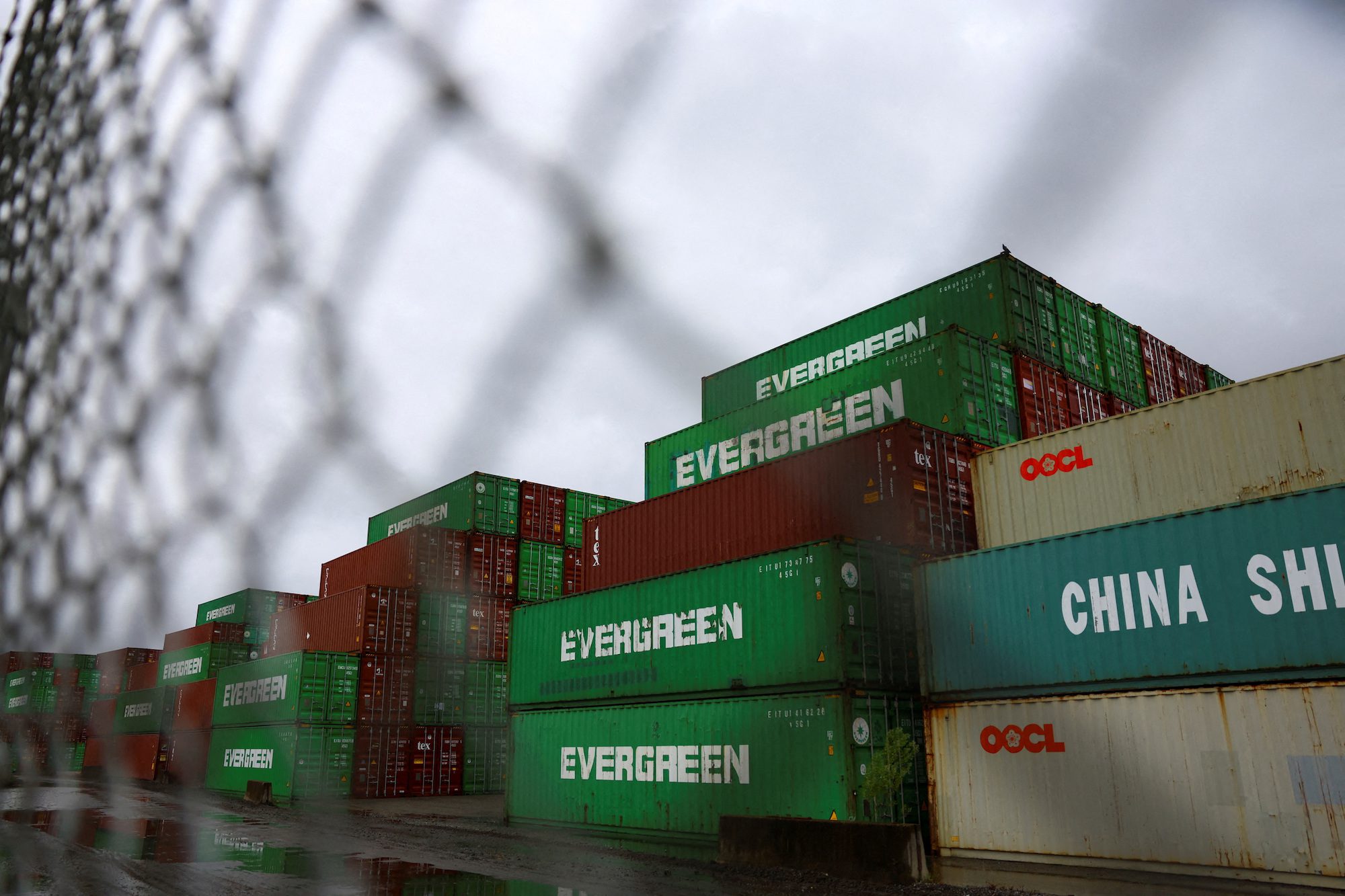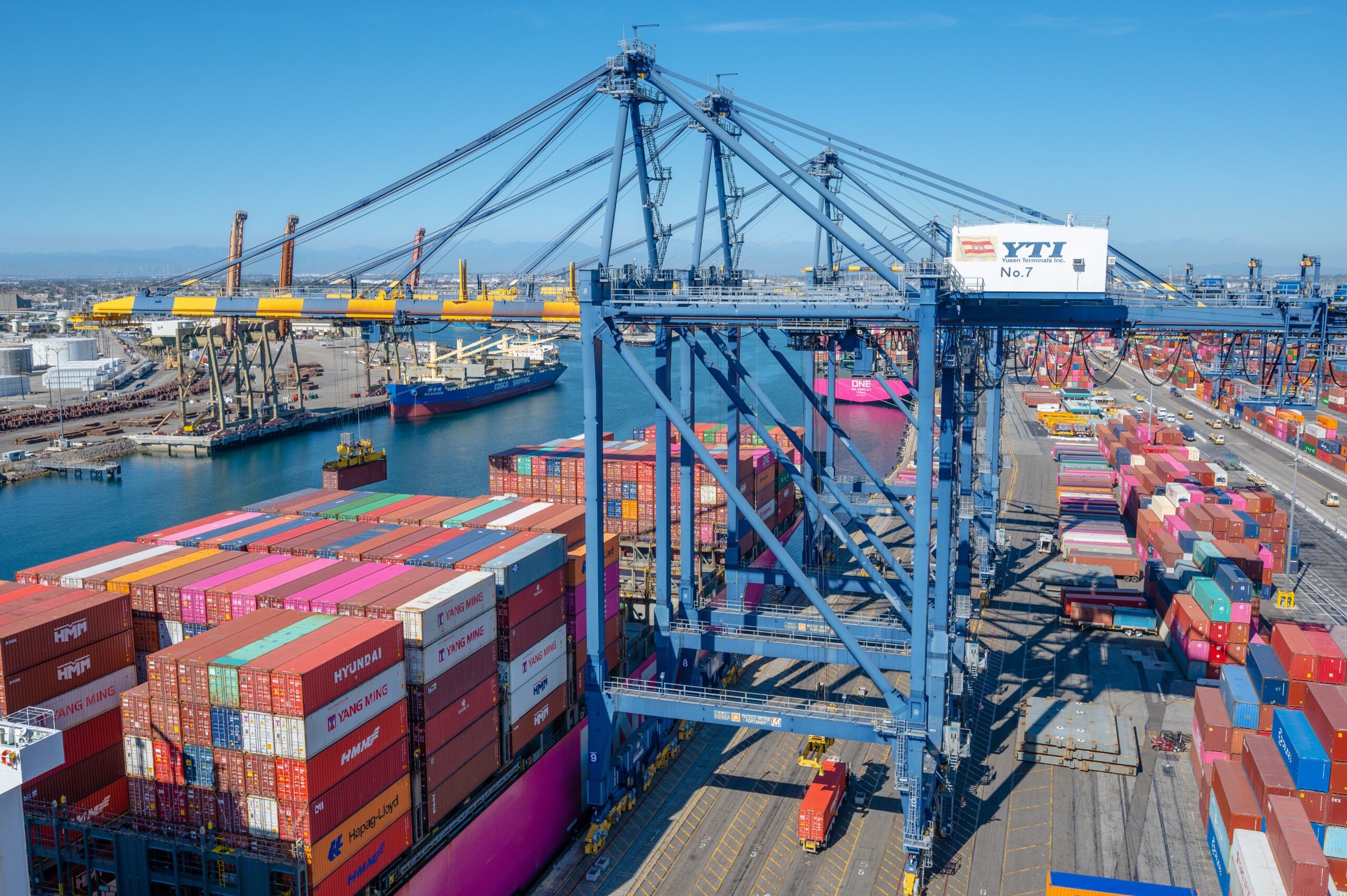(Bloomberg Markets) —
A hot war in Ukraine, a trade war between China and the US, and Donald Trump’s threat of sweeping tariff increases raise the prospect of an accelerated rupture of international ties. For the global economy, the consequences would be significant—and negative.
Bloomberg Economics has modeled three futures: a “slowbalization” base case of incremental improvement in global cooperation, a division of the world into Cold War-style blocs and a less likely return to go-go globalization. For each case, we use a suite of models to estimate the impact on gross domestic product and debt for major economies. Our results show a second Cold War would knock $7.1 trillion from global GDP in 2035 relative to the level if the current slowbalization trend continues. Debt would be propelled higher by slower growth and increased defense spending.
The US election on Nov. 5 will be a pivot point. Vice President Kamala Harris is still filling out the details of her foreign policy. But continuity seems a reasonable bet, with ongoing controls on trade with China, continued support for Ukraine and adherence to alliances from western Europe to East Asia. Trump is pledging 60% tariffs on China and as much as 20% on everyone else—the biggest trade shock since the infamous Smoot-Hawley Act that deepened the Great Depression of the 1930s. The ex-president is also threatening to remove the US security guarantee from countries that don’t pay up. A third plank of the Trump platform is deporting unauthorized immigrants.
Reality is messy, and our stylized scenarios aren’t intended as forecasts of the world under a Harris or Trump presidency. Still, on trade, immigration and the US role in the world, the difference between their policy platforms is stark. Our scenarios give a sense of the dynamics—and the consequences—if global ties break.
Slowbalization
Under slowbalization, there’s not much progress in lowering barriers to trade, investment and migration, but they don’t get higher either. US tariffs and export controls on China stay in place, although they aren’t severe enough to cut off access to global markets or technology. Advanced economies benefit from immigration, which adds to labor supply and boosts productivity, and efficiency gains from trade continue.
In this case, global growth for the next decade averages 3.3%, down from 3.7% in the decade before the Covid-19 crisis hit. Global GDP rises, from $105 trillion in 2023 to $183 trillion in 2035. China, buoyed by a modest strengthening of global ties but weighed down by debt and a falling population, sees growth slow to an average 3.7%, from 7.7% in the pre-Covid period. In the US, growth decelerates to 1.7%, from 2.4%. Debt levels continue to rise, pushed higher by spending pressures from aging populations, higher interest rates and political realities that mean it’s easier to promise fiscal discipline tomorrow than to deliver it today. For the Group of Seven advanced economies, debt climbs from 126% of GDP in 2023 to 142% in 2035. US debt rises from 97% of GDP in 2023 to 139% in 2035. For China, it increases from 56% to 88%.
Cold War II
This scenario finds the world divided into rival US- and China-led blocs. Tariffs between the blocs rise, from an average of about 8% to almost 40%—equivalent to the level imposed by China on the rest of the world back in 1992. Migration between blocs comes to a halt. Investors pull funds from rivals. Global defense spending rises, from an average of 2.3% of GDP in 2023 to 4% by 2035.
The economic impact is far-reaching. The end of trade and capital flows impedes emerging markets’ access to advanced technology, slowing productivity gains. Countries in the China bloc take a significant hit. Ending migration flows impedes labor supply and productivity growth in advanced economies in the US bloc, too.
Global GDP growth in the decade ahead would slow to 2.9%, leaving the world economy in 2035 some $7.1 trillion smaller than in the base case. In the US, average annual growth slows to 1.6%, resulting in about a $500 billion blow to 2035 GDP. In China, growth averages 3%, with $2.5 trillion shaved off 2035 GDP. Countries that benefited most from globalization suffer most when it swings into reverse.
On debt, the combination of higher defense spending and lower growth means the burden rises. For G-7 economies, the Cold War scenario sees the debt-to-GDP ratio increase to 171% in 2035, roughly 29 percentage points higher than in the slowbalization base case. Debt climbs to 148% in the US, which is tough to sustain. In China, debt would swell to 118% of annual output.
Re-globalization
Now imagine US-China tariffs return to pre-trade-war levels and the Doha Round of tariff reductions—introduced in November 2001—is finally concluded. Cross-border capital and migration flows between the US and China return to pre-trade-war trends, and defense spending as a share of GDP stays unchanged.
Average annual global GDP growth in the decade ahead would be 3.4%, taking the size of the world economy in 2035 to $186 trillion. In the US, growth picks up to 1.8%, adding $600 billion to 2035 GDP relative to the base case. In China, reduced trade barriers and renewed capital inflows take average growth up to 4%, adding $800 billion to 2035 GDP. Faster growth shaves down debt-to-GDP ratios, but without any adjustment to defense spending relative to the baseline, the impact is marginal.
So which future is coming?
Regardless of who wins in November, a rapid return to the 1990s-2000s heyday of globalization looks improbable. Trump’s 2016 victory demonstrated the political potency of rejecting free trade, leaving little appetite in Washington for a return to the old neoliberal consensus. Still, times change, leaders change, and a return to enthusiasm for globalization, though unlikely today, isn’t impossible tomorrow.
Slowbalization is where we are now, and that’s generally a decent guide to where we’re going. The US’s “small yard, high fence” model that seeks to block China’s access to a specific set of technologies critical to national security while still allowing for the broader benefits of openness has the benefit of keeping American business happy and answering at least some of the concerns of national security hawks.
Would a Trump II presidency result in a Cold War II world? Probably not. Trump’s policies take aim at allies such as Germany as well as adversaries such as China. There’s also a question about whether campaign trail promises would turn into in-office realities. But a more confrontational atmosphere—and tweets to match—could sway policy momentum. It’s tough to say a kind word about China in Washington these days, and the same is true of the US in Beijing. That’s an environment where relations could spiral down.
A world somewhere between the slowbalization base case and the Cold War II risk scenario isn’t a great place to be. Growth will be weaker, investment opportunities riskier. Breaking supply chains will add to inflation. For emerging markets, the ladder from low income to high will be harder to climb. The price for security might be worth paying. That doesn’t mean it isn’t steep.
© 2024 Bloomberg L.P.

 Join The Club
Join The Club











